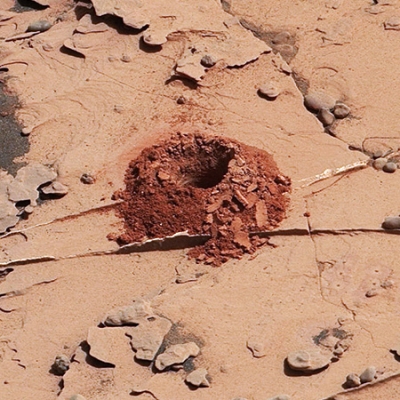
Martian soil is a farmer’s nightmare! The reason? It has no organic content. It is not aerated either. Instead, all it contains is mineral matter, largely in the form of sand, the product of weathering of volcanic rocks. Mars is also extremely dry. Scientists say the trace amount of water in the soil, about 2 per cent, may have been absorbed from the atmosphere.
The Martian surface layer is made up of fine dust. Rich in iron oxides, or rust, this dusty layer gives the planet its unique red colour! Though similar iron-rich soils can also be found on the Earth, it is limited to certain places. Not so, on Mars. Dust storms sweep across it occasionally, transporting fine dust all over the planet. So the Martian surface layer is largely homogenous, like a huge desert.
Photographs of steep slopes, such as those of hills, craters and troughs, often reveal thin dark lines on the Martian surface. Sometimes, these “streaks” start small and gradually grow until they are hundreds of meters in length! They may grow lighter in colour with time, and even follow the edges of rocks and boulders blocking their path to get to the other side. What are these strange lines? Are they flow paths of water, or growth of organisms? No one knows for sure. Scientists think they may just be hidden darker layers of soil that are revealed by dust avalanches or spinning columns of dust, called dust devils.
Picture Credit : Google




